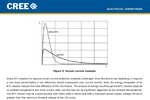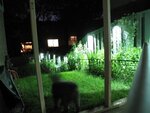T
treez
Guest

Hello,
We are designing a led driver, spec = vin=30vdc, vout=19vdc, iled = 2.5a
If somebody disconnects the led load, then the output capacitor (100n) gets charged up to 30V….Then when someone re-connects the led load, the 30V , 100n capacitor suddenly discharges through the 19v led array….will the led array be damaged?….the energy is 0.5.C.V1^2 – 0.5.C.V2^2
Where C = 100n
V1 = 30V
V2 = 15V
So total energy = 33.8uJ…….though what does this do to the led array?….will it weaken it , incidiously, making it fail in the field prematurely?
the mlx10803 led driver we are using doesn't facilitate open led protection, (at least not without many extra components)......but we stay using the mlx10803 because it is the only one that jitters the switching frequency......we need this because there are 24 of these cards inside the enclosure, so we need the jittering , or else we will get ticking on the supply ...which is two PSP-500-24 PSUs.....each supplies 12 mlx10803 driver cards.
We are designing a led driver, spec = vin=30vdc, vout=19vdc, iled = 2.5a
If somebody disconnects the led load, then the output capacitor (100n) gets charged up to 30V….Then when someone re-connects the led load, the 30V , 100n capacitor suddenly discharges through the 19v led array….will the led array be damaged?….the energy is 0.5.C.V1^2 – 0.5.C.V2^2
Where C = 100n
V1 = 30V
V2 = 15V
So total energy = 33.8uJ…….though what does this do to the led array?….will it weaken it , incidiously, making it fail in the field prematurely?
the mlx10803 led driver we are using doesn't facilitate open led protection, (at least not without many extra components)......but we stay using the mlx10803 because it is the only one that jitters the switching frequency......we need this because there are 24 of these cards inside the enclosure, so we need the jittering , or else we will get ticking on the supply ...which is two PSP-500-24 PSUs.....each supplies 12 mlx10803 driver cards.




